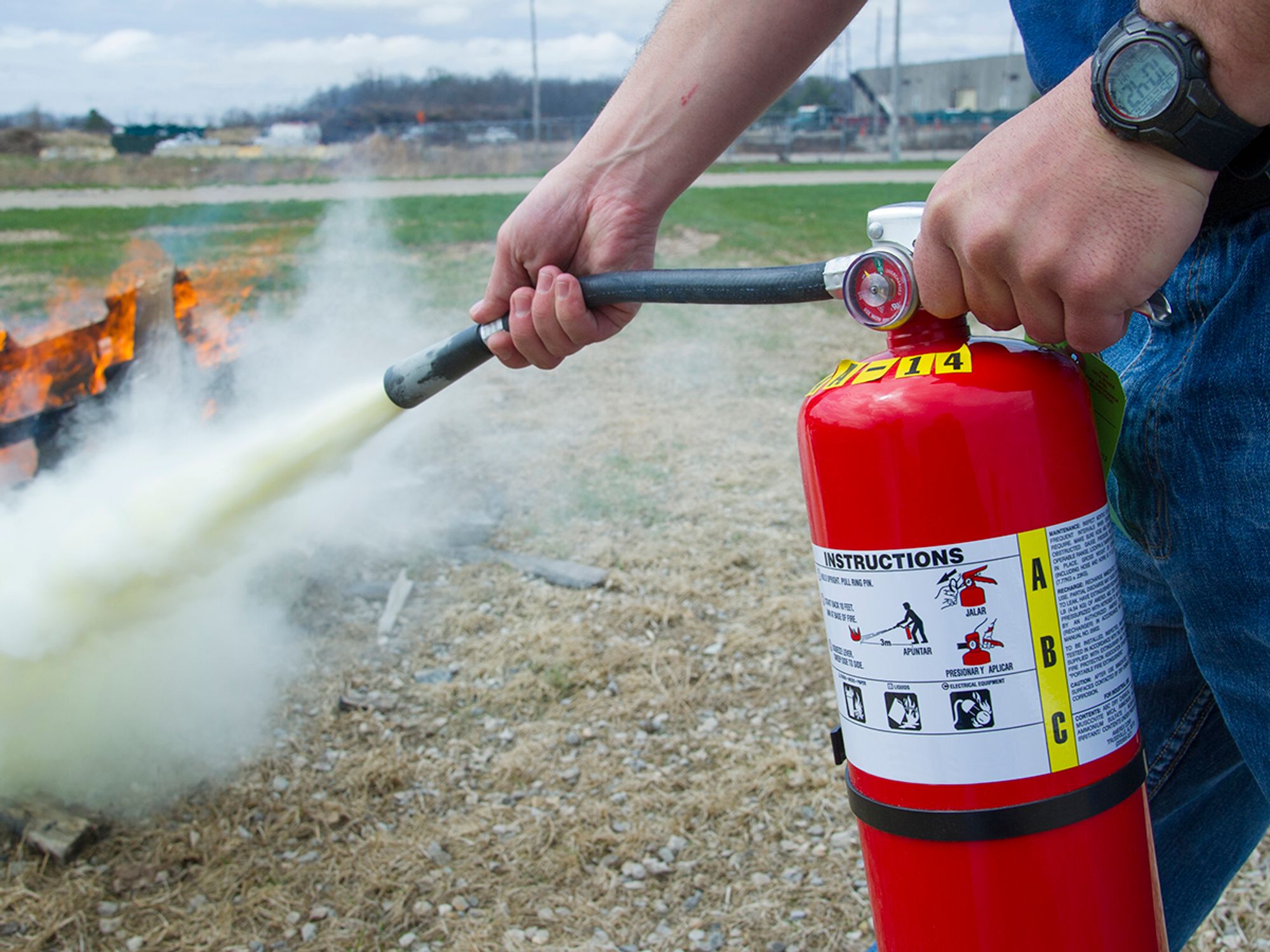Fire protection

OSHA has many requirements concerning fire protection in the workplace. These requirements are found in Subpart L and in some other specific standards. Among the items addressed by OSHA standards is fire brigades, all portable and fixed fire suppression equipment, fire detection systems, and fire or employee alarm systems.
Action steps
- Provide approved and appropriate portable fire extinguishers.
- Mount, locate, and identify portable fire extinguishers so that they are readily accessible to employees without subjecting the employees to possible injury.
- Maintain fire extinguishers in a fully charged and operable condition.
- Inspect, maintain, and test fire extinguishers.
- Provide necessary training to employees who are expected to use portable fire extinguishers.
- Ensure that hose and standpipe systems meet OSHA requirements.
- Ensure all automatic sprinkler systems meet OSHA requirements.
- Maintain any fixed extinguishing systems per OSHA requirements.
- Follow OSHA requirements for any fire brigade you choose to form.
- Ensure fire detection systems are maintained properly.
- Provide an employee alarm system that gives warning for necessary emergency action as called for in the emergency action plan, or for reaction time for safe escape of employees from the workplace or the immediate work area, or both.
Training action plan
The level and type of training needed for fire protection depends on the level and type of fire protection your facility has in place. For instance, if you have a fire brigade, extensive training must be provided to fire brigade members, per 1910.156.
Similarly, if you provide portable fire extinguishers for employee use, such employees must be trained. This training must familiarize employees with the general principles of fire extinguisher use and the hazards involved with incipient stage fire fighting. Training must be provided upon initial employment and at least annually thereafter.
You must also provide training to any employees who have been designated to use fire fighting equipment as part of an emergency action plan. Training must be provided upon initial employment and at least annually thereafter.
You should also train all employees on the actions they need to take relative to your emergency alarm system. They should be familiar with the distinct sounds of the system and what each sound means.
Tips
- Fire extinguishers have to be kept in their designated locations at all times when not being used.
- When extinguishers are removed for maintenance or testing, they must be replaced by an operable unit.
Checklists
Review these checklists to ensure fire safety at your facility.
Fire extinguishers
- Are portable fire extinguishers provided, mounted, located, and identified so that they are readily accessible to employees?
- Are only approved portable fire extinguishers used?
- Are portable fire extinguishers maintained, fully charged, operating properly, and kept in designated places?
- Are portable fire extinguishers provided for employee use and selected and distributed based on the classes of anticipated fires and on the size and degree of hazard that would affect their use?
- Are travel distances to extinguishers appropriate?
- Are all portable fire extinguishers in the workplace inspected, maintained, and tested?
- Is hydrostatic testing performed by trained persons with suitable testing equipment and facilities?
- Are portable extinguishers hydrostatically tested at the intervals listed in Table L-1 of 1910.157?
- Has an educational program been provided to familiarize employees with the general principles of fire extinguisher use and the hazards involved with incipient stage fire fighting?
- Have employees been trained (who have been designated to use fire fighting equipment) in the use of the equipment?
Fire alarm
- Have you established an employee alarm system that complies with 1910.165?
- If the employee alarm system is used for alerting fire brigade members, or for other purposes, is a distinctive signal used for each purpose?
- Are all employee alarm systems in proper working condition, except when undergoing repairs or maintenance?
Fire detection systems
- Are all devices approved for use?
- Are fire detection systems and components returned to normal operating condition as soon as possible after each use or test?
Fire brigades
- If you choose to form a fire brigade, are the requirements of 1910.156 met?
Sprinkler systems
- Are automatic sprinkler system water control valves, air and water pressure checked weekly/periodically as required?
- Are fire control sprinkler heads kept clean?
- Are sprinkler heads protected by metal guards when exposed to physical damage?
- Is proper clearance maintained below sprinkler heads?
